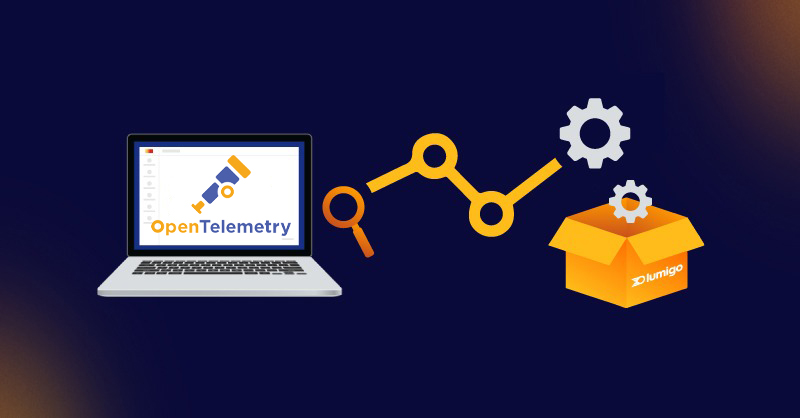Dec 19 2023

This is the first post in a 3-part series about shifting Observability left.
When it comes to the reliability and performance of your applications, compromise is not an option in the world of software development. This is where observability can help developers achieve a more robust and scalable infrastructure. To achieve this, developers must embrace an approach to observability, which at its core involves gaining deep insights into the application’s behavior, performance, and, ultimately, the user experience. Unfortunately, most Observability tools were designed and built for Operations teams looking to be alerted when something has gone wrong.
To date, developers have been reluctant to adopt proprietary observability tools in their day-to-day jobs fully. This has often led developers to toil away at troubleshooting and debugging issues by searching through log files or trying to reproduce production issues in dev environments.
In this blog post, we will explore the concept of shifting observability left and the importance of empowering developers with the information they need to resolve issues quickly.
What is Observability and Why Shift it Left?
Observability is understanding how a system behaves based on the information available from its internal components. Traditionally, observability has been associated with operations and monitoring teams. However, the shift left approach advocates that developers should actively participate in the observability process right from the early stages of development. This allows developers to detect and diagnose issues promptly, leading to faster resolutions and improved customer satisfaction.
Shifting observability left brings several benefits:
- Early Issue Detection: By incorporating observability into the development process, developers can identify and address issues at the earliest stages, reducing the likelihood of costly errors in production.
- Faster Debugging and Troubleshooting: With real-time insights at their disposal, developers can rapidly diagnose and troubleshoot problems, leading to quicker issue resolution and faster development cycles.
- Improved Collaboration: Observability tools facilitate better collaboration between developers, operations teams, and other stakeholders, promoting a seamless flow of information and understanding.
- Enhanced Customer Experience: Proactively addressing issues leads to a better user experience, ensuring customer satisfaction and loyalty.
How to Shift Observability Left with Lumigo
Lumigo is a powerful observability platform designed to simplify and enhance the observability experience for developers. It equips developers with the tools to identify, debug, and resolve issues efficiently. Let’s explore some key features that make Lumigo an indispensable ally in embracing observability throughout the software development lifecycle.
- Distributed Tracing Made Simple: Lumigo offers an intuitive distributed tracing system that allows developers to trace requests across microservices effortlessly. It provides a comprehensive view of how services interact and helps quickly identify issues and their root cause.
- Automated Error Tracking and Insights: Lumigo automatically captures and analyzes errors, exceptions, and performance issues, providing actionable insights and detailed information about their root causes.
- Real-Time Monitoring and Alerting: With Lumigo, developers can set up real-time alerts based on customizable thresholds, ensuring prompt notifications when critical issues occur.
- End-to-end Visibility with Microservices Support: Lumigo provides end-to-end visibility for microservices applications, allowing developers to monitor and analyze every service request and its impact on the entire system.
- Collaborative Debugging: Lumigo fosters collaboration between developers and other teams by providing a shared platform with a unified view of application performance and health.
Embracing Observability with Lumigo
Now that we understand the importance of shifting observability left and how Lumigo can empower developers, let’s explore how to incorporate it into the development process effectively:
- Integrate Lumigo Early in the Workflow: Include Lumigo in your development environment from the beginning. This ensures that observability is ingrained in the application’s DNA from the start.
- Adopt Distributed Tracing for Microservices: Utilize Lumigo’s distributed tracing to gain visibility into the interactions between microservices. This feature helps you identify issues and their root cause across the system before impacting users.
- Set Up Proactive Alerts: Configure real-time alerts using Lumigo to receive notifications when issues arise. This proactive approach enables developers to address problems before they escalate.
- Analyze Error and Exception Data: Regularly review error and exception data captured on Lumigo’s issues page. This provides valuable insights into the application’s stability and points towards potential areas of improvement.
- Leverage Microservices Insights: For microservices applications, take advantage of Lumigo’s comprehensive insights to gain in-depth visibility into service requests, execution times, and resource consumption.
Embrace Observability in Your Deployment
Observability is no longer just a concern for operations teams; it is a vital practice that developers must embrace from the early stages of development. Shifting observability left empowers developers to create robust, reliable, and high-performance applications. Lumigo is the ideal partner in this journey, offering a feature-rich platform that simplifies observability and facilitates collaboration across teams. By adopting Lumigo, developers can confidently navigate the complexities of modern software development, ensuring their applications shine in terms of performance and user experience.
So, take the leap and shift observability left with Lumigo! Sign up for your free account today.

